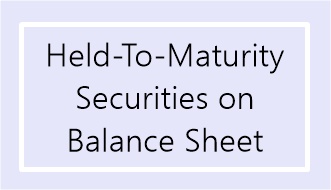
Table of Contents
Defining Held Order
A held order means a Market order that needs to be carried out immediately and without delay. The implementation time is instantaneous when a trader receives instructions via a held order because the order must be filled immediately. It is referred to as 'hit the bid or take the offered line' in financial markets' lingo.

Held orders are requests to purchase and sell assets like stocks, Bonds, or other hybrid tradable instruments on financial markets, much like regular market orders.
The held limit order, which has a cap on the purchasing or selling price, is a variation of the held order. The not-held order, which is the reverse of a held order, is a variation that allows traders to fill the order at any time and at any price. Investors who want to quickly modify their exposure to particular stocks by selling them, switching to other stocks, or switching to a new product frequently place held orders. Therefore, a held order is the finest market order a trader can employ with immediate execution to ensure a speedy transaction.
Prerequisites for Issuing a Held Order
Issuing a held order is ideal in two situations: trading a breakout and closing an erroneous position.
1. Trading Breakouts
A breakout is the price of security rising above a resistance level (prior high) or below a support level (previous low). Held orders are especially helpful if a trader wishes to jump into the market as soon as a breakout occurs. The trader shouldn't worry about slippage expenses either. Slippage happens when a market maker adjusts the bid-ask spread to their advantage after receiving a market order. As a result, a trader with a high turnover stock may decide to pay slippage fees to fill the order. Therefore, it depends on the trader's willingness to experience slippage to fill the order quickly.
2. Removing a Mistaken Position
This scenario happens when a trader buys a security incorrectly (for whatever reason). To reduce any anticipated or unanticipated negative risk, a holding order is placed in this scenario to reverse the erroneous position promptly. A retained order is ideal for unwinding an incorrect position and swiftly executing the right trade due to its instantaneous execution feature.
Talk to our investment specialist
Unfavourable Situations for Issuing a Held Order
Irregular or Illiquid securities typically produce wide bid-ask spreads. As a result, a trader who places a held order on an inactive stock will have to pay a hefty spread to fulfil the order.
Uses of Held Order
Although most investors aim to obtain the best price, held orders are most advantageous in the following three circumstances:
Trading Breakouts
If a trader wants to buy a stock right away and isn't concerned with slippage charges, they can utilise a held order to join the market on a breakout. Slippage happens when a market maker modifies the spread after receiving a market order in their favour. Traders are frequently willing to pay slippage in stock with high volume to guarantee an immediate fill.
Closing an Error Position
Traders may use a held order to unwind an error position they want to settle immediately to lower the danger of a downside move. To fast reverse their work before purchasing the right security, an investor might, for instance, realise they had bought the wrong stock and put a held order.
Hedging
If a trader is using a hedged order, the hedge should be completed quickly after the original position is taken to prevent a change in the price of the hedging instrument that would render the hedge ineffective. A held order could facilitate this.
Conclusion
When traders receive a held order, they have to execute it immediately, and it does not give as much freedom as other exchange orders, especially the not-held order, to scour the market in search of a better price. Since a held order must be filled immediately, time is the main restriction.
All efforts have been made to ensure the information provided here is accurate. However, no guarantees are made regarding correctness of data. Please verify with scheme information document before making any investment.












